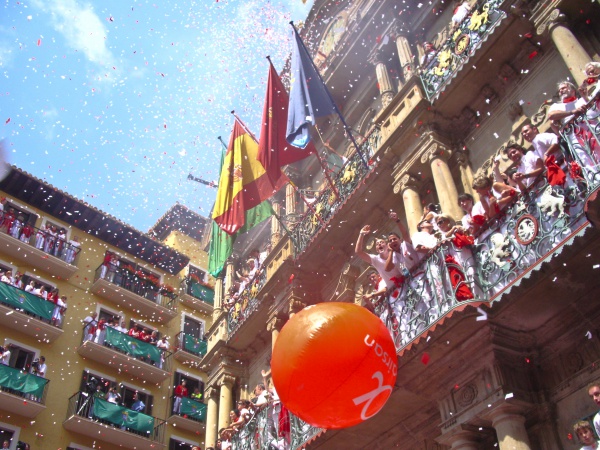Facts About Festival of San Fermín
The San Fermín festival is a lively week-long celebration held annually in Pamplona, Spain, to honor Saint Fermín, one of the co-patrons of Navarre. The festivities commence on July 6 with a spectacular fireworks display and conclude on July 14 with the heartfelt singing of the traditional song, "Pobre de mí."
The most iconic event of the festival is the running of the bulls. In this thrilling spectacle, participants dash ahead of a group of bulls through the narrow streets of Pamplona, culminating at the bullring. However, the festival offers much more—the schedule is packed with various traditional and folkloric events. You can experience the enchanting Giants and Big-Heads Parade, traditional sports exhibitions, daily bullfights, and nightly firework shows that illuminate the sky.
The origins of the San Fermín festival date back to medieval times, when secular fairs and religious ceremonies were combined to honor the saint. The festival gained international fame thanks to Ernest Hemingway’s novel "The Sun Also Rises" which introduced the excitement and allure of the event to the English-speaking world. Hemingway's affection for the festival and bullfighting significantly contributed to its global popularity. Note that the festival was canceled in 2020 due to the COVID-19 pandemic.
Each day of the festival is brimming with activities. The running of the bulls stands as the main highlight, featuring brave participants sprinting in front of the bulls through Pamplona's narrow streets, ending in the bullring. The Giants and Big-Heads Parade is a whimsical event showcasing enormous figures dancing to traditional tunes. Additionally, there are traditional sports exhibitions and daily bullfights. As night falls, the citadel park hosts stunning firework displays.
Over the years, the San Fermín festival has expanded, attracting millions of visitors from around the world. It remains a significant cultural event in Spain, blending deep-rooted religious traditions with vibrant celebrations. Each year, both locals and tourists flock to Pamplona to partake in the joyous festivities.

 Gibraltar
Gibraltar